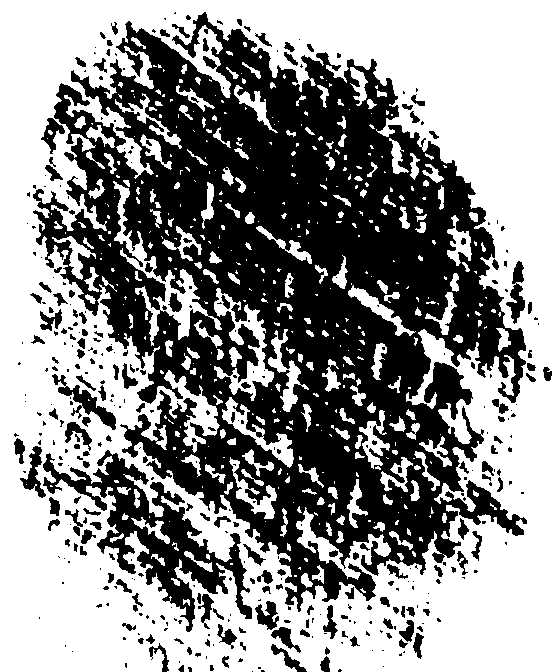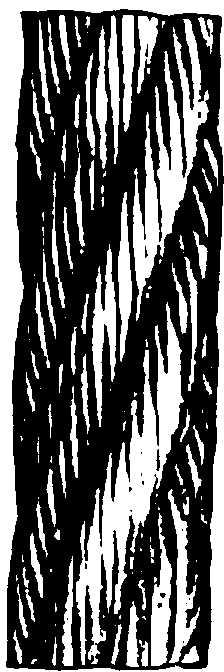TM5-3810-305-10
break at that time, there is no need for con-
cern. On the other hand, should more wires
break, the cause should be carefully investi-
gated.
On any installation, valley breaks - i.e.,
where the wire ruptures between strands -
should be given serious attention. When two
or more such conditions are found, the rope
should be replaced immediately.
It is well to remember that once broken wires
appear - in a normal rope operating under
normal conditions - a good many more will
show up within a relatively short period.
Attempting to squeeze to the last measure of
service from a rope beyond the allowable
number of broken wires (Table 7) will create
an intolerably hazardous situation.
A diagnostic guide to some of the most
prevalent rope abuses is given in Table 8. On
the following pages these abuses are illus-
trated and described.
A wire that has broken under a tensile load in
excess of its strength is recognized by the
“cup and cone” configuration at the fracture
point (A, Figure 4-43). The necking down of
the wire at point of failure shows that failure
occurred while the wire retained its ductility.
A fatigue break is usually characterized by
squared-off ends perpendicular to the wire
either straight across or Z-shaped (B) and
(c).
PEENING
ABRASION
Figure 4-42. Effects of Abrasion and Peening
Figure 4-43. Types of Breaks in Wire Rope
4-49









